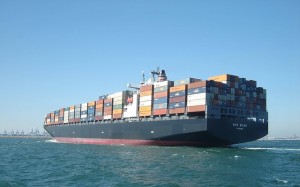 There are over 90,000 cargo ships powered by oil-based fuels that, according to one study, account for 3-4% of worldwide emissions (including SOx, NOx, PM and CO2). In 2012, the International Maritime Organization sparked a series of regulations aimed at reducing sulfur emissions and in January, 2015, a new U.S. rule went into effect that requires ships operating in coastal waters to make further reductions. With an abundance of U.S. natural gas, one potentially cost-effective compliance option is to transition to marine shipping fueled by LNG, however, challenges remain.
There are over 90,000 cargo ships powered by oil-based fuels that, according to one study, account for 3-4% of worldwide emissions (including SOx, NOx, PM and CO2). In 2012, the International Maritime Organization sparked a series of regulations aimed at reducing sulfur emissions and in January, 2015, a new U.S. rule went into effect that requires ships operating in coastal waters to make further reductions. With an abundance of U.S. natural gas, one potentially cost-effective compliance option is to transition to marine shipping fueled by LNG, however, challenges remain.
Supporters of LNG as a fuel source say it will reduce air pollutants beyond the levels required by current regulations and it allows for long-term cost savings. A single giant container ship running on conventional fuels emits many chemicals and LNG could reduce the emissions of NOx by 60% and SOx by 90-100%. While the upfront costs of marine shipping fueled by LNG are 10-15% greater than conventional ships, in the long-term, supporters believe LNG would save money because of the abundance of natural gas and because existing ships would not have to undergo ongoing, expensive technological retrofitting to meet regulations.
There are numerous challenges, however, with LNG as a cargo-ship fuel. Shipowners traditionally purchase fuel on the spot market at any location but, there are a limited number of LNG fueling stations, and natural gas providers primarily work with long-term take or pay contracts. In addition, retrofitting and building LNG ships is expensive, and since LNG is less energy-dense than traditional fuels, onboard tanks require more space, reducing the available room for cargo. Finally, LNG requires extremely low temperatures and has a high-energy content, so it is difficult to contain and can be hazardous.
Whereas I understand the convenience of using LNG for LNG ships, a more manageable fuel, such as propane, could go a long way to diminish pollution without expensive retrofits in… Read more »
A year or two ago, I would have said no, the benefits of an LNG-fueled shipping fleet do not outweigh the challenges & risks. That position would have been based… Read more »
LNG is hazardous stuff. Note this from Boston Magazine: Why is Boston the only major city with an LNG terminal? Because nobody else wants one. When the Everett terminal was… Read more »